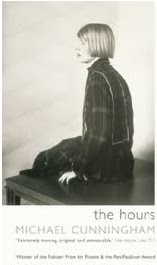Greenwich and its Royal park have, for centuries, been known for their historical setting: Greenwich park is thought to have been the site of early Bronze Age barrows and 6th century Saxon burial grounds. Greenwich Palace saw the reign of Henry VII and the birth of Henry VIII and his marriages to Catherine of Aragon and Anne Boleyn, as well as the birth of their daughters, Mary and Elizabeth. Charles II founded and built the Royal Observatory. The London Marathon starts in Greenwich Park and as the 2012 Olympics bring the equestrian events to the park, it is once again about to take its place in history.
Given the theme of this blog, though, I thought I'd take the opportunity to look at its literary history.
Charles Dickens was a frequent vistor to Greenwich and is believed to have been to The Trafalgar Tavern, which subsequently features as the setting for a breakfast scene in his novel, Our Mutual Friend. Greenwich also features in David Copperfield and Pickwick Papers.
William Shakespeare's play Henry VI (Act IV Scenes II & III) are set in Blackheath, which sits at the top of Greenwich Park. Blackheath itself saw a lot of history including the Peasant's Revolt in 1381.
Given the theme of this blog, though, I thought I'd take the opportunity to look at its literary history.
Charles Dickens was a frequent vistor to Greenwich and is believed to have been to The Trafalgar Tavern, which subsequently features as the setting for a breakfast scene in his novel, Our Mutual Friend. Greenwich also features in David Copperfield and Pickwick Papers.
William Shakespeare's play Henry VI (Act IV Scenes II & III) are set in Blackheath, which sits at the top of Greenwich Park. Blackheath itself saw a lot of history including the Peasant's Revolt in 1381.
Graham Swift's novel, Waterland, sets some of its scenes in Greenwich and around the Royal Observatory.
 |
| Cutty Sark back to its former glory |
You may have also seen Greenwich feature in many different literary adapatations. The 2009 film of Sherlock Holmes was filmed in Greenwich, as were the adaptations of Sense and Sensability, Bridget Jones: the Edge of Reason, Gulliver's Travels, Charlotte Gray, The King's Speech, as well as scenes from the next James Bond film, Skyfall.




.JPG)







